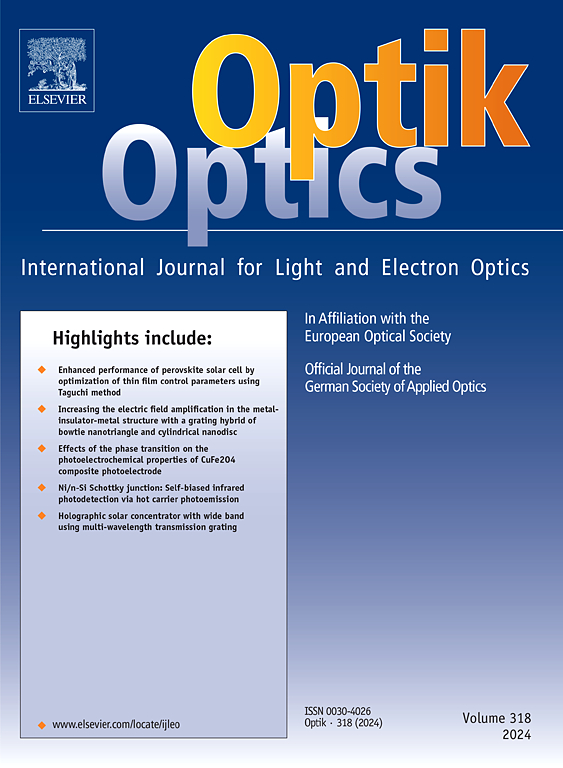无机钙钛矿量子点有毒Cd2+金属离子光学传感器的研制
IF 3.1
3区 物理与天体物理
Q2 Engineering
引用次数: 0
摘要
在常温条件下,采用超声法合成了具有高光致发光强度的CsPbBr3-CsPb2Br5纳米晶体。制备的纳米晶体在镉(Cd2+)离子存在下,由于高发光CsPbBr3的分解而在发光中淬灭。Cd2+猝灭cnc的时间分辨光致发光寿命从26.61 ns降低到19.84 ns。猝灭后样品的寿命降低,表明纳米晶体的激子被Cd2+离子捕获,并在非发光路径上释放能量。CNCs对Cd2+离子的检测范围为10−3 ~ 10−5 m,经氢氧化氨修饰的纳米晶体具有较强的荧光猝灭性。氢氧化氨的加入减少了纳米晶体表面配体的数量,增强了Cd2+离子与纳米晶体的相互作用。Cd2+离子与CNCs的相互作用导致了强烈的荧光猝灭。氢氧化铵修饰的纳米晶对Cd2+离子的检出限为10 ~ 6 M,显示了纳米晶的高灵敏度。本文章由计算机程序翻译,如有差异,请以英文原文为准。
Development of inorganic perovskite quantum dots-based optical sensor for toxic Cd2+ metal ion detection
CsPbBr3-CsPb2Br5 nanocrystals (CNCs) with high photoluminescence intensity were synthesized using the ultrasonication process under ambient conditions. The prepared nanocrystals were found to be quenched in luminescence in the presence of cadmium (Cd2+) ions due to the decomposition of highly luminescent CsPbBr3. The time-resolved photoluminescence lifetime of the Cd2+ ions-quenched CNCs was decreased from 26.61 to 19.84 ns. The decreased lifetime of the quenched sample indicated that the excitons of the nanocrystals were trapped from Cd2+ ions and released energy in non-luminous paths. The broad detection range of Cd2+ ions using CNCs was from 10−3 to 10−5 M. The synthesized nanocrystals modified with ammonia hydroxide displayed strong fluorescence quenching. The addition of ammonia hydroxide to CNCs reduced the amounts of ligands on the surface of nanocrystals, which enhanced the interaction between Cd2+ ions and CNCs. The interaction of Cd2+ ions with CNCs led to strong fluorescence quenching. The detection limit of Cd2+ ions using the ammonia hydroxide-modified CNCs was reached to 10−6 M, revealing the high sensitivity of the prepared nanocrystals.
求助全文
通过发布文献求助,成功后即可免费获取论文全文。
去求助
来源期刊

Optik
物理-光学
CiteScore
6.90
自引率
12.90%
发文量
1471
审稿时长
46 days
期刊介绍:
Optik publishes articles on all subjects related to light and electron optics and offers a survey on the state of research and technical development within the following fields:
Optics:
-Optics design, geometrical and beam optics, wave optics-
Optical and micro-optical components, diffractive optics, devices and systems-
Photoelectric and optoelectronic devices-
Optical properties of materials, nonlinear optics, wave propagation and transmission in homogeneous and inhomogeneous materials-
Information optics, image formation and processing, holographic techniques, microscopes and spectrometer techniques, and image analysis-
Optical testing and measuring techniques-
Optical communication and computing-
Physiological optics-
As well as other related topics.
 求助内容:
求助内容: 应助结果提醒方式:
应助结果提醒方式:


